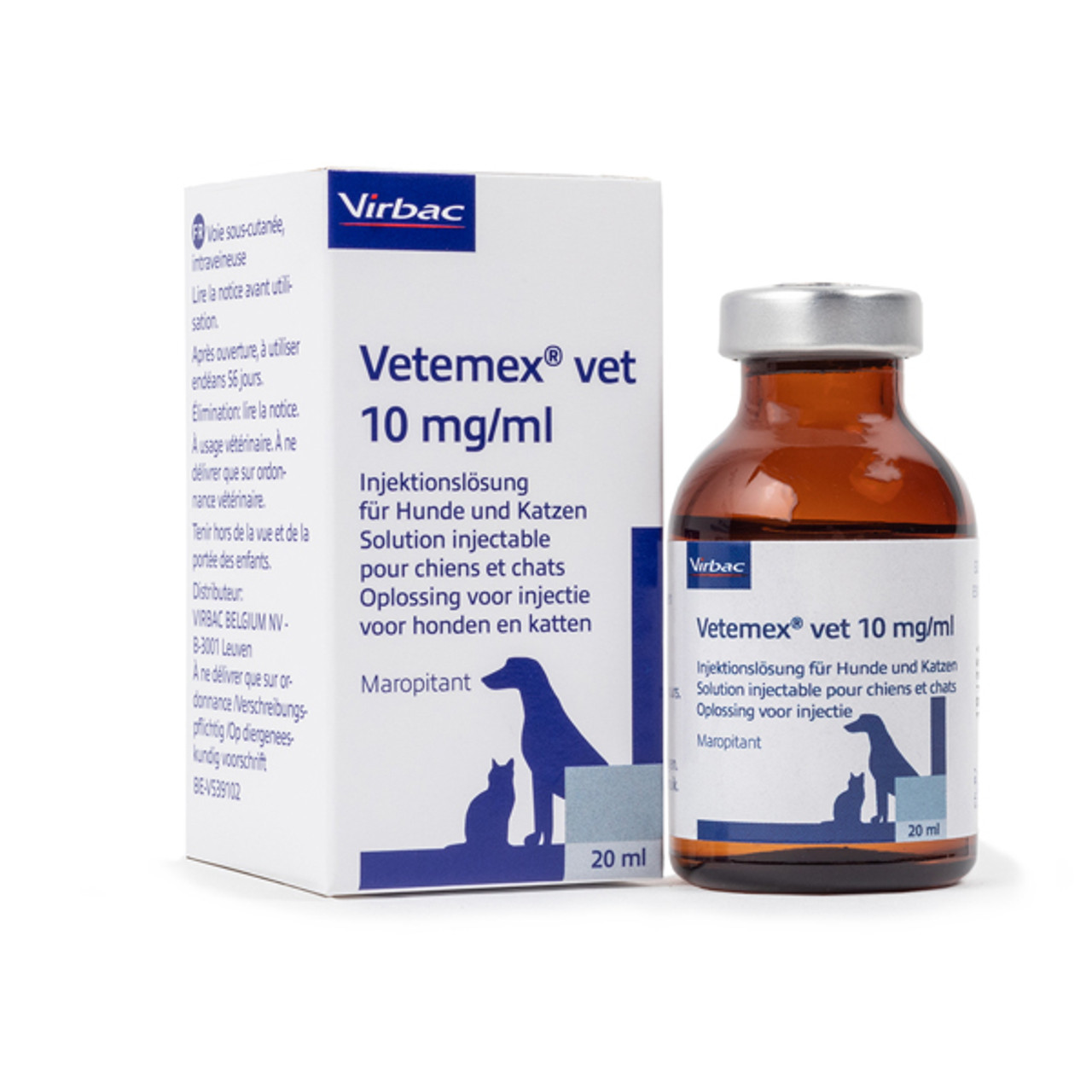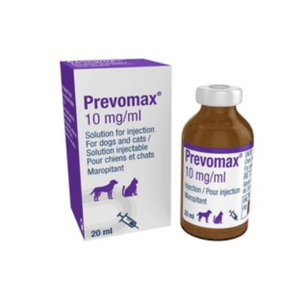Description
Vetemex is an antiemetic injectable solution for the prevention of vomiting except that induced by motion sickness. For the treatment of vomiting, in combination with other supportive measures.
Dogs
For the treatment and prevention of nausea induced by chemotherapy.
For the prevention of vomiting except that induced by motion sickness.
For the treatment of vomiting, in combination with other supportive measures.
For the prevention of perioperative nausea and vomiting and improvement in recovery from general anaesthesia after use of the μ-opiate receptor agonist morphine.
Cats
For the prevention of vomiting and the reduction of nausea, except that induced by motion sickness.
For the treatment of vomiting, in combination with other supportive measures.
Contraindications
None.
Special Warnings For Each Target Species
Vomiting can be associated with serious, severely debilitating conditions including gastrointestinal obstructions; therefore, appropriate diagnostic evaluations should be employed.
Good veterinary practice indicates that antiemetics should be used in conjunction with other veterinary and supportive measures such as dietary control and fluid replacement therapy while addressing the underlying causes of the vomiting.
The use of the veterinary medicinal product against vomiting due to motion sickness is not recommended.
Dogs:
Although maropitant has been demonstrated to be effective in both the treatment and prevention of emesis induced by chemotherapy, it was found more efficacious if used preventively. Therefore, it is recommended to administer the veterinary medicinal product prior to administration of the chemotherapeutic agent.
Cats:
The efficacy of maropitant in reduction of nausea was demonstrated in studies using a model (xylazine-induced nausea).
Special Precautions For Use In Animals
The safety of maropitant has not been established in dogs less than 8 weeks of age, or in cats less than 16 weeks of age, and in pregnant or lactating dogs and cats. Use only according to the benefit-risk assessment by the responsible veterinarian.
Maropitant is metabolised in the liver and therefore should be used with caution in patients with hepatic disease. As maropitant is accumulated in the body during a 14 day treatment period due to metabolic saturation, careful monitoring of liver function and any adverse events should be implemented during long term treatment.
The veterinary medicinal product should be used with caution in animals suffering from or with predisposition for cardiac diseases as maropitant has affinity to Ca- and K-ion channels. Increases of approximately 10% in the QT interval of the ECG were observed in a study on healthy Beagle dogs administered 8 mg/kg orally; however, such an increase is unlikely to be of clinical significance.
Due to the frequent occurrence of transient pain during subcutaneous injection, appropriate animal restraining measures may have to be applied. Injecting the product at refrigerated temperature may reduce pain at injection.
Special precautions to be taken by the person administering the veterinary medicinal product to animals
Maropitant is a neurokinin-1 (NK1) receptor antagonist that acts in the central nervous system. The veterinary medicinal product may therefore cause nausea, dizziness and drowsiness in case of accidental self-injection. If accidental self-injection occurs, seek medical advice immediately and show the package leaflet or the label to the physician.
The veterinary medicinal product may cause skin irritation. Skin contact should therefore be avoided. In case of accidental exposure, wash affected skin area with plenty of water.
The veterinary medicinal product may cause skin sensitization. People with known hypersensitivity to maropitant and/or benzyl alcohol should avoid contact with the veterinary medicinal product. If you develop symptoms such as a rash after accidental exposure, seek medical advice and show the physician this warning.
The veterinary medicinal product may cause eye irritation. Eye contact should be avoided. In case of accidental exposure, flush eyes with plenty of water and seek medical attention immediately.
Wash hands after use.
Adverse reactions (frequency and seriousness)
Pain at injection site may occur when injected subcutaneously. In cats, moderate to severe response to injection is very commonly observed (in approximately one third of cats).
In very rare cases, anaphylactic type reactions (allergic oedema, urticaria, erythema, collapse, dyspnoea, pale mucous membranes) may occur.
The frequency of adverse reactions is defined using the following convention:
– very common (more than 1 in 10 animals treated displaying adverse reaction(s)
– common (more than 1 but less than 10 animals in 100 animals treated)
– uncommon (more than 1 but less than 10 animals in 1,000 animals treated)
– rare (more than 1 but less than 10 animals in 10,000 animals treated)
– very rare (less than 1 animal in 10,000 animals treated, including isolated reports).
Use during pregnancy, lactation or lay
Use only according to the benefit-risk assessment by the responsible veterinarian, because conclusive reproductive toxicity studies have not been conducted in any animal species.



Reviews
There are no reviews yet.